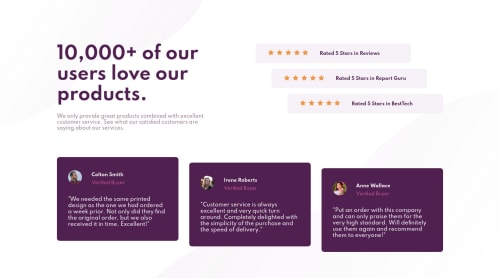Mobile first design with plain CSS and Flexbox

Solution retrospective
Any feedback is appreciated!
I have some problem with the bottom background image for the desktop, even though I position it using background position to the bottom of the page, the image remains positioned with 50px up from the bottom. I used min-height:100vh on the body element and it works but I get a scrollbar.
Please log in to post a comment
Log in with GitHubCommunity feedback
- @FoxMalder-coder
One of posible solution is:
- Reset margin on body. Make it min-height: 100vh.
- Set just padding-top to main. Any other margin exept margin-right: auto and margin-left: auto set to 0 or not install at all. The other one:
- The same. And make body flex with center align and justify.
- Set all margin and padding for main to 0.
Join our Discord community
Join thousands of Frontend Mentor community members taking the challenges, sharing resources, helping each other, and chatting about all things front-end!
Join our Discord